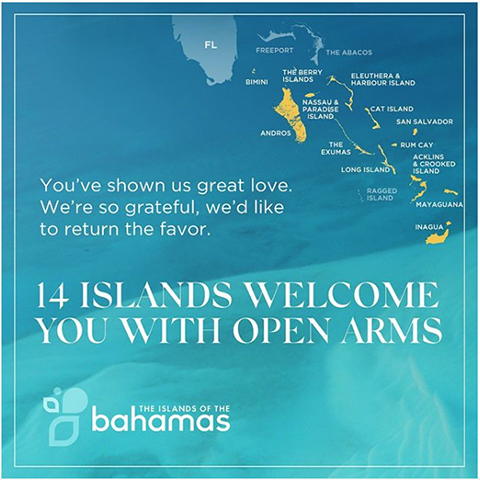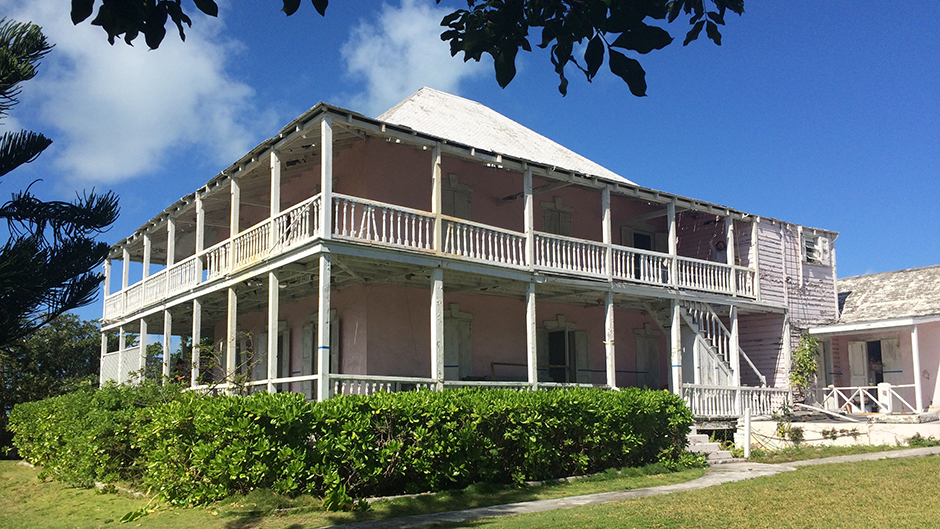Since Hurricane Dorian left the Bahamas’ northern-most islands in ruins, the University of Miami’s Teófilo Victoria has visited the sprawling archipelago several times, and he plans to return as often as he can.
“I feel it’s an obligation,” the associate professor of architecture said. “A sure way of helping.”
Not because he and School of Architecture lecturer Ricardo Lopez have been working with the University of the Bahamas to restore the decaying residence of one of the Bahamas’ early British governors, the last royal governor of Virginia. Nor because Victoria’s private firm, de la Guardia Victoria Urbanists and Architects, has several projects underway on the island chain.
Victoria is committed to helping the Bahamas, which derives more than half of its GDP from tourism, recover. He understands others may have qualms about vacationing on or visiting the island chain when so many of its residents are suffering the dire consequence of the category 5 storm that relentlessly pounded the Abacos and Grand Bahama islands for two days, killing at least 50 people and leaving tens of thousands homeless.
But, noting that Dorian left most of the Bahamas, which consists of more than 700 islands sprinkled across more than 100,000 square miles of ocean, unscathed, Victoria encourages others to follow his lead.
“I understand the moral question, but this is not Cuba. The Bahamas are a democracy and the people of Grand Bahama and the Abacos have gone to other islands looking for work so the more work in tourism the better for everyone,” he said. “I’ve been there several times since the hurricane and there is absolutely no problem flying there. Except for the Abacos and Grand Bahama, it’s business as usual.”
The Bahamas Ministry of Tourism and Aviation is likewise urging travelers to visit islands other than the Abacos or Grand Bahama. Tourism officials note that the affected islands account for less than 20 percent, or about 3,000, of the country’s total number of hotel rooms, and while Grand Bahama International Airport and Leonard Thompson International Airport on Marsh Harbour, Abaco, are closed indefinitely, airports in Nassau, the nation’s capital, and on Exuma, South Bimini, North Eleuthera, and Long Island remain open. Cruise and ferry terminals are also open and ready to receive visitors.
But that message may not be resonating. Trinidad Callava, a lecturer from the Miami Business School who teaches a class on luxury branding, said she was unaware that the devastation in the Bahamas was so confined. She suspects that, like her, much of the public associates the Bahamas only with what they see in the news—images of despair, devastation, and loss, rather than the pink sandy beaches, stunning coral reefs, and colonial architecture the tiny nation is famous for.
“It’s all about the last thing we heard on the news so the impression is that the Bahamas are completely compromised,” Callava said. “If they are up and running, they need to get that message out loud and clear. They need to update their websites. They have to educate; they need to advertise; maybe they need to offer incentives.”
 The Bahamas tourism ministry began telegraphing that open-for-business message on Monday, at least on social media. The ministry’s Instagram account now includes a map of the Bahamas, highlighting the 14 unaffected islands that continue to welcome tourists, 6.5 million of whom visited the Bahamas last year, “with open arms.”
The Bahamas tourism ministry began telegraphing that open-for-business message on Monday, at least on social media. The ministry’s Instagram account now includes a map of the Bahamas, highlighting the 14 unaffected islands that continue to welcome tourists, 6.5 million of whom visited the Bahamas last year, “with open arms.”
“You’ve shown us great love,” the text on the map says. “We’re so grateful, we’d like to return the favor.”
Among those unaffected islands is Harbour Island, where John Murray, 4th Earl of Dunmore, the last royal governor of the Colony of Virginia who later served as governor of the Bahamas from 1787-1796, built the house that the School of Architecture’s Victoria and Lopez are working to restore.
Once a tourist attraction, the crumbling two-story wood structure is now shuttered, but its cultural and community significance may have grown since Dorian damaged so many of the historic buildings on the Abacos. Like Harbour Island’s Dunmore Town, the Abacos’ Hope Town was settled by British subjects who, loyal to the crown, fled to the Bahamas after America won its independence.
Along with software engineers from UM’s Center for Computational Science, Lopez and some of his students visited the governor's residence in the spring of 2016, taking drone images of the structure to establish a framework for its refurbishment.
“Our next step is to help coordinate a town hall meeting on Harbour Island that will bring together community stakeholders and students to decide what purpose the residence could serve after it’s restored,” said Lopez, assistant director of UM’s Center for Urban and Community Design. “Given what’s happened after Dorian, I would suspect there’s a heightened sense of urgency to create safe storm shelters, which is a role this building could play.”
Students also may have the opportunity to work on a resiliency, recovery, and preservation plan for Hope Town, which Victoria said UM and University of the Bahamas faculty are discussing. “We hope to certainly be working on this for the spring semester,” he said.
Robert C. Jones Jr. contributed to this report.

